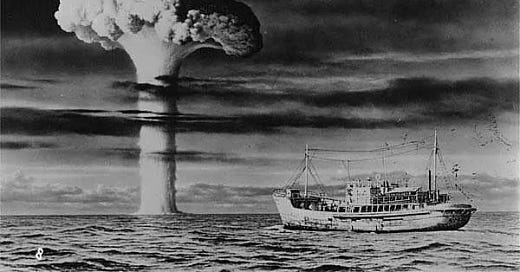In March 1954, the crew of Fukuryu-maru embarked on a routine fishing expedition off Bikini Atoll, unaware that the US was about to detonate Castle Bravo, one of the most powerful hydrogen bombs ever created. The explosion, 1,000 times more potent than the bomb dropped on Hiroshima, released an unprecedented amount of radioactive fallout into the atmosphere.
Tragically, the Fukuryu-maru crew, numbering 23, became unwitting victims of this nuclear testing. Eleven crew members succumbed to acute radiation sickness. Little did they know that the invisible enemy they faced that day would cast a dark shadow over their futures.
Over the ensuing half-century, the surviving crew members faced a silent, relentless foe—radiation-induced illnesses. At least six members died from liver cancer, a chilling testament to the long-term health implications of exposure to nuclear fallout.
The impact of this incident reverberated internationally, straining relations between the US and Japan. In 1955, acknowledging its responsibility, the US offered Japan $2 million in compensation. However, no amount of money could truly compensate for the lives lost and the enduring health issues faced by the Fukuryu-maru crew.
The legacy of Bikini Atoll serves as a stark reminder of the human cost of nuclear testing. The toll it took on the Fukuryu-maru crew highlights the invisible and insidious nature of radiation, leaving a lasting imprint on those who inadvertently became victims of geopolitical decisions.





